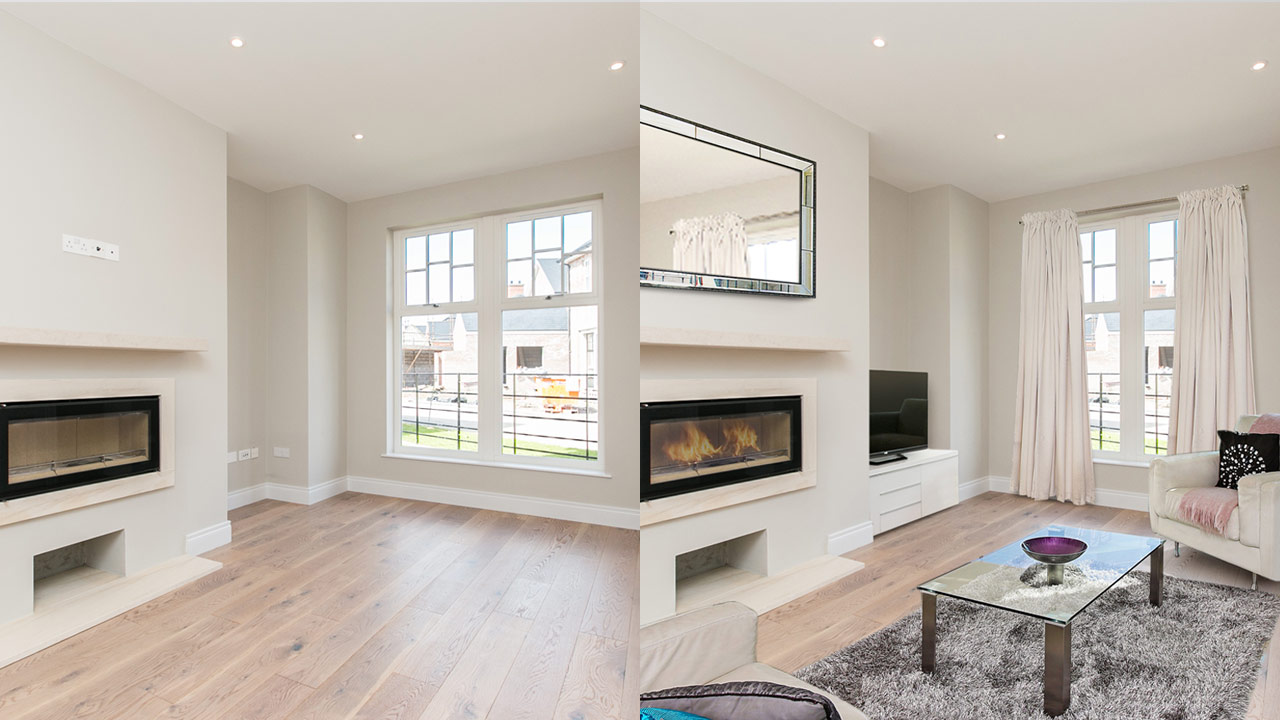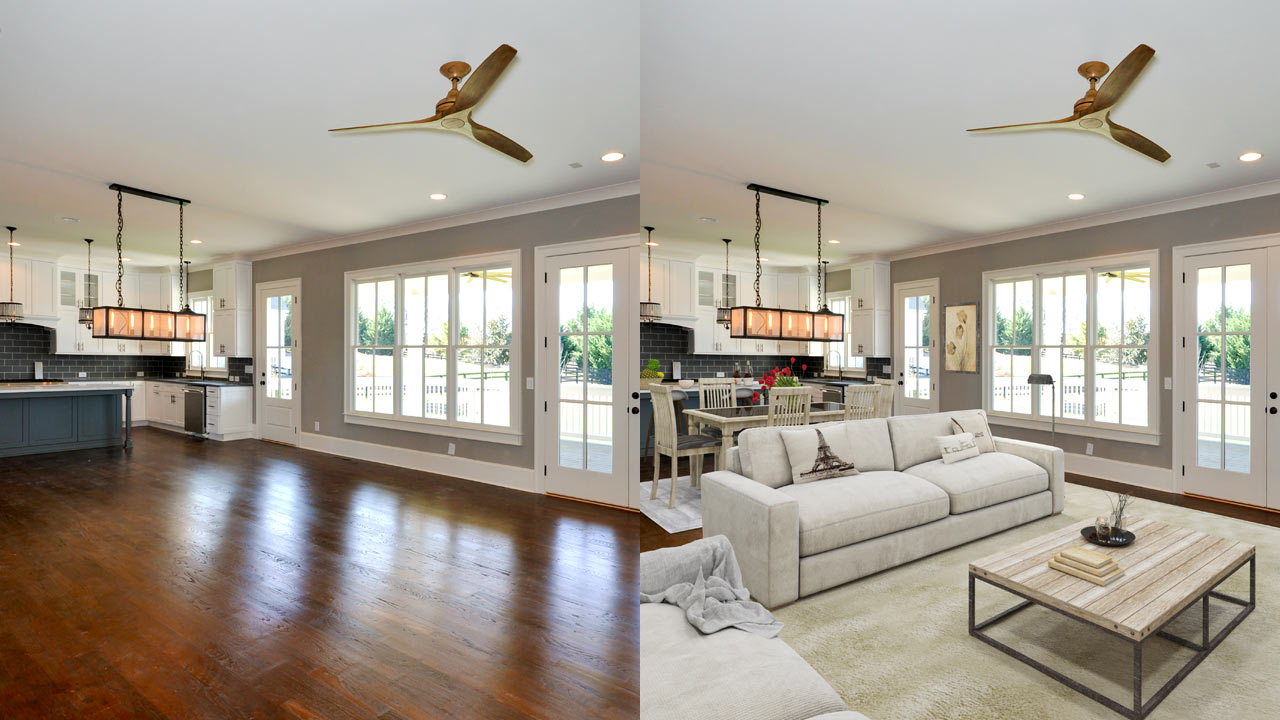Everything You Need to Know About Virtual Staging
Digitally-enhanced spaces are becoming more popular in helping buyers visualize a home’s potential
 Written By Robert Van Rhijn — As the founder of Strata.ca, Robert is one of Ontario’s leading experts on the GTA condo market. He is also the Broker of Record at Strata.
Written By Robert Van Rhijn — As the founder of Strata.ca, Robert is one of Ontario’s leading experts on the GTA condo market. He is also the Broker of Record at Strata.Over the past decade, the homebuying process has undergone a massive transformation. Before online platforms like Strata.ca became popular, people spent hours scouring newspapers for real estate listings. They then spent even more time checking out each home in person, without a clear idea as to whether that home even met their search criteria in the first place.
But today’s technology has made it so much easier to decide whether you want to spend the time visiting an actual property. That’s because you can better visualize a home’s potential with virtual staging.
Virtual staging takes an empty space, then transforms it into one that’s inviting enough for buyers to want to visit. Stagers will do this by using software to insert ‘imaginary’ furniture and decor. This technique can also be used to enhance rooms that are already furnished.
Whether you’re interested in a virtually staged property, or you’re a seller looking to market your home in this way – let’s explore the pros and cons of this innovative modern technique.
Benefits of Virtual Staging

Photo courtesy: BoxBrownie.com
Chance to visualize
When looking at a property online, most potential buyers aren’t interested in the current owner’s furniture and design taste. They find it much more helpful to visualize what they themselves could do with the space.
That’s why virtual staging can come in handy, but only if done right.
“I’ve seen some disastrous attempts where it actually took away from the property’s potential,” says Strata.ca realtor Milan Mitrovic, who adds that virtual staging must offer a good balance.
“This technique is most effective when it showcases a beautiful aesthetic, while still allowing a buyer the freedom to imagine themselves living there.”
The technology has come a long way
Today’s virtual staging software has the ability to create very realistic images. Usually the only giveaway is a lack of shadows, which you’d otherwise see in a traditional photograph. But very few people notice this anyways.
Although DIYers might be keen on virtual staging apps to market their home, it’s better to find someone who specializes in this. A DIY effort may end up looking like a cut-and-paste collage made in Microsoft Paint. Meanwhile, professional stagers will use programs like Autodesk, Adobe Photoshop or Adobe Lightroom to create a polished masterpiece.
Less invasive
Traditional staging can involve clearing out an entire room, so other furniture and decor can be brought in. This also means homeowners are forced to put their belongings in storage, which is an added expense.
Virtual staging may only require a bit of decluttering. Or at the most, you may need to remove just a few large items so the stager can fill that space digitally. On the other hand, if you’re selling a vacant unit – you can avoid having to fill that space with rented furniture.
Allows for flexibility
If you’re a seller and your real estate agent thinks the nursery could be marketed better as a home office – virtual staging will allow you to switch up a room’s overall purpose. By removing a few physical items, such as the crib or wall decals, it’s quite easy to replace those with furniture and decor typically found in a home office.
Drawbacks of Virtual Staging

Photo courtesy: BoxBrownie.com
Can be a letdown for buyers
Although there are benefits to virtual staging, one of the main drawbacks is that it can mislead buyers.
When agents bring a potential buyer to see the property in person, it could feel like a major letdown. Although many listings will explicitly state that a home has been ‘virtually enhanced’, there are some that don’t.
In this case, buyers may be disheartened to show up at a home only to find an empty box. Or worse yet – a space that is so outdated that it’s nearly impossible to picture themselves living there.
“I once took a client to see a Midtown condo for sale at The Berwick Condos, and it was the polar opposite of what was portrayed in the online photos,” says Mitrovic, who doesn’t believe the unit actually sold in the end.
“The difference between the virtual staging and the reality was so stark that I think it really threw buyers off.”
May get pricey
As mentioned earlier, virtual staging is not recommended for DIYers. It really should be done by a professional. But that also means it could get expensive.
Virtual stagers usually have expertise in digital artistry as well as interior design. It’s a mix of these qualifications that will ensure the final product appears authentic and tasteful.
One of the goals is to entice buyers to come see the property in person, after viewing the virtually-enhanced photos online. If you’re a seller, it may be wise to spend the extra money and hire a professional to market your home properly.
Cannot be used on its own
Unlike traditional staging, people cannot rely solely on virtual staging to make decisions about a property.
This means that if you’re a seller – you might consider providing an additional set of photos showing what the space does look like. This way, you’re conveying transparency in your listing – minimizing the letdown some buyers may feel when viewing the home in person.
And if you’re a buyer – understand the limitations of virtual staging. This is just one tool that sellers use to market a property. Ask your realtor if the seller has provided unstaged photos or if there’s a floor plan available. Any additional information will provide context, and can help temper your expectations before seeing the place in person.
Starting your search for a new home? Click on any of these links to access active listings, sold listings or contact a Strata agent.
For any questions about this article or media inquires, please email media@strata.ca
